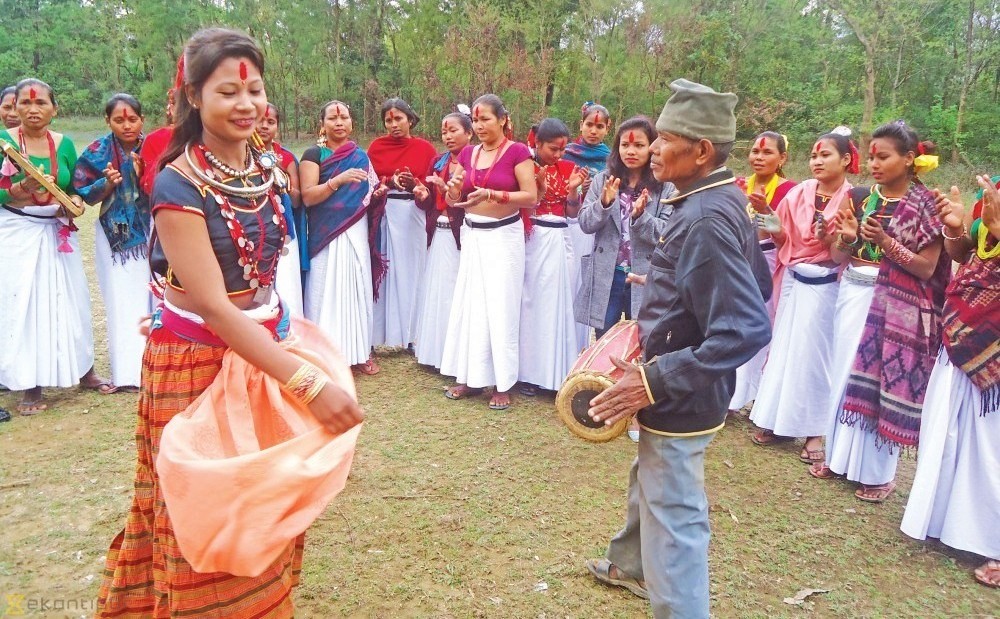Sakhiya dance starts in Banke and Bardiya.

By Our Correspondent
Nepalgunj, Oct 3: With the starting of greatest festival Dashain, the Sakhiya dance in the western region is started in Banke and Bardiya.
The dance started before the Dashain festival in Tharu community where the majority of Tharu lived. The dance will continue after the Dashain festival.
Sakhiya dance is celebrated in robustly among the Tharus-the indigenous people who lived in far-western belt of the county.
The dance is performed by male and female. A priest has managed to protect from the bad evil. The big house and gentle man of the village is protector of the dance.
The dance is performed in the evening time after completed all task of the day and it performed whole day of Tika, said Bikram Tharu, the leader of Tharu Community of Baijapur.
According to him, girls are performed dance and male play Madal, musical instrument. The enjoyment of dance is increases the playing pattern of Madal.
It needs to be at least four to five youth to play musical instrument. Around 15 to 20 girls Sakhiya dancers wearing white colour Fariya, red colour Choli and ribbon attires performed the dance.
In Sakhiya dance, specially pray for Demondaura, Ghatili, Jaganthwa, Pasiya, Katktuwa, Jinguni, Madhwa, Shiva Parvati, Pandav and Krishna with other god and goddess through the song and asking for secure life, said Dependra Chaudari, another Tharu leader.
He said that boys wear white colour Dhoti and vest as per their wise, he said.
Youth girls specially take part in the dance but other all age’s women and men take part in the dance. Four girls take responsibility in women group and two in male group to perform the dance.
In women group, two performed the role of Pachginiya and two Jestagohaniya and a performed Moharniya. Moharniya started the song from the starting point and Pachginiya started from the ending point and Jestagohaniya support them.
Similarly, 52 tones music of Madal is played and the dance is performed in three sections.
Recent News

Do not make expressions casting dout on election: EC
14 Apr, 2022
CM Bhatta says may New Year 2079 BS inspire positive thinking
14 Apr, 2022
Three new cases, 44 recoveries in 24 hours
14 Apr, 2022
689 climbers of 84 teams so far acquire permits for climbing various peaks this spring season
14 Apr, 2022
How the rising cost of living crisis is impacting Nepal
14 Apr, 2022
US military confirms an interstellar meteor collided with Earth
14 Apr, 2022
Valneva Covid vaccine approved for use in UK
14 Apr, 2022
Chair Prachanda highlights need of unity among Maoist, Communist forces
14 Apr, 2022
Ranbir Kapoor and Alia Bhatt: Bollywood toasts star couple on wedding
14 Apr, 2022
President Bhandari confers decorations (Photo Feature)
14 Apr, 2022











